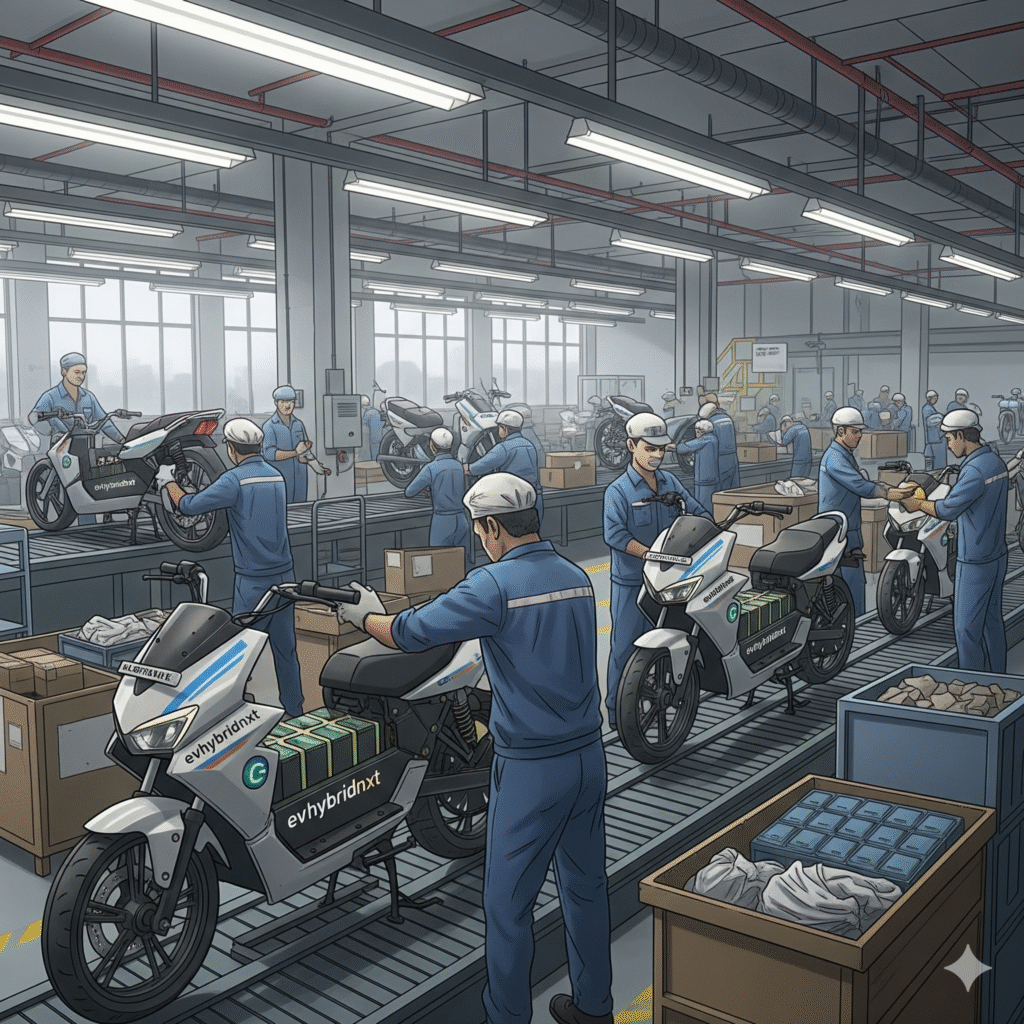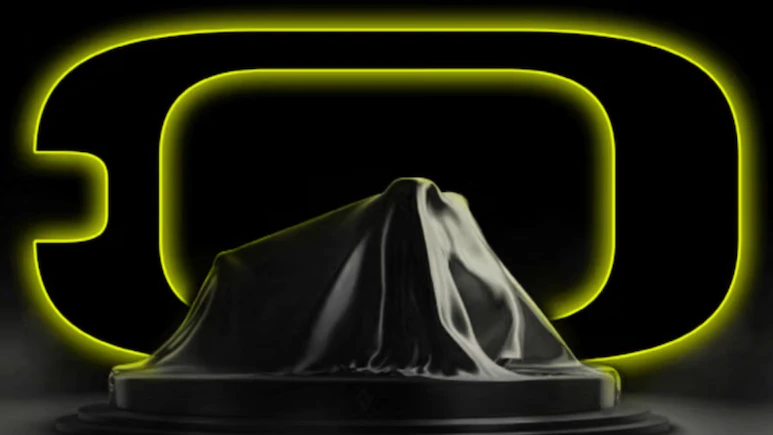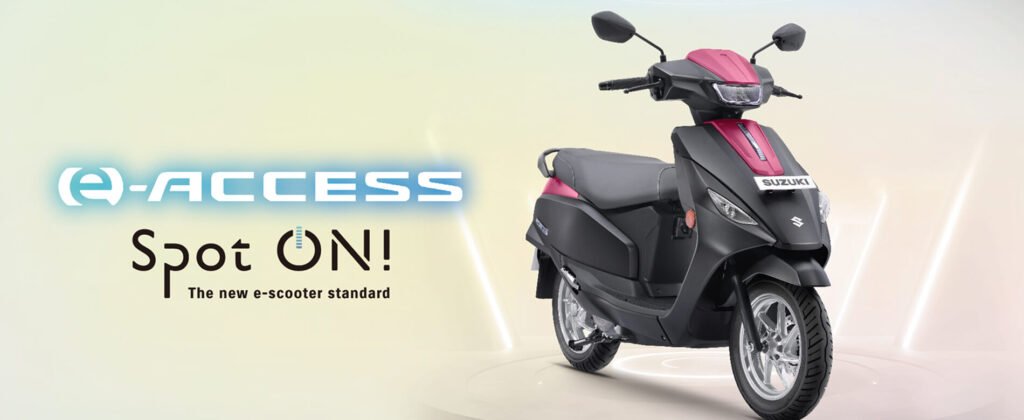As India accelerates its transition to sustainable mobility, the government is turning its focus to electric motorcycles—a segment that remains largely untapped despite the booming electric two-wheeler market dominated by scooters. With key incentives for electric two-wheelers set to expire in just seven months (by April 2026), Niti Aayog, the government’s premier policy think tank, is actively engaging stakeholders to explore production opportunities.
This comes at a critical juncture, as India’s electric vehicle (EV) ecosystem has matured through a series of ambitious schemes, from the National Electric Mobility Mission Plan (NEMMP) 2020 to the latest PM E-DRIVE initiative. While electric scooters have seen explosive growth—over 14 lakh units supported under FAME-II alone—electric motorcycles lag behind, representing less than 5% of the e-two-wheeler market in 2025. This article delves into India’s EV journey, highlights key government schemes, and examines the potential for electric motorcycles to bridge the gap toward a greener transport future.
India’s electric mobility journey gained momentum with the launch of the National Electric Mobility Mission Plan (NEMMP) 2020, a comprehensive policy aimed at accelerating EV adoption and production. This plan laid the groundwork for a cleaner transport sector by addressing challenges like high upfront costs, limited infrastructure, and supply chain dependencies. A cornerstone of NEMMP was the FAME India Scheme, which has evolved through phases to drive demand and manufacturing.
FAME-I: Building the Initial Momentum (2015-2019)The first phase of FAME (Faster Adoption and Manufacturing of Hybrid and Electric Vehicles) focused on subsidizing EVs and developing charging infrastructure. With a budget of around ₹795 crore, it supported the purchase of over 2.55 lakh EVs and approved 520 charging stations with ₹43 crore allocation. The scheme prioritized two-wheelers, recognizing their dominance in India’s vehicle parc (over 200 million units).
| Category | Number of EVs Supported |
|---|---|
| e-2 Wheelers | 1,51,648 |
| e-3 Wheelers | 786 |
| e-4 Wheelers | 1,02,446 |
| Electric Buses | 425 |
| Total | 2,55,305 |
FAME-I not only boosted uptake but also spurred early investments in battery tech and localization, setting the stage for scaled-up efforts.FAME-II: Scaling Up Adoption (2019-Ongoing)Launched in April 2019 with a ₹11,500 crore outlay, FAME-II expanded subsidies for EVs, e-buses, and charging networks. As of June 2025, it has supported over 16.29 lakh EVs, with e-two-wheelers leading the charge at 14.35 lakh units. The scheme emphasizes demand creation while mandating local manufacturing, reducing import reliance.
| Category | Number of EVs Supported |
|---|---|
| e-2 Wheelers | 14,35,065 |
| e-3 Wheelers | 1,65,029 |
| e-4 Wheelers | 22,644 |
| e-Buses | 5,165 (6,862 sanctioned) |
| Total | 16,29,600 |
To complement this, the Ministry of Heavy Industries (MHI) allocated ₹800 crore in March 2023 to oil majors—IOCL, BPCL, and HPCL—for 7,432 public charging stations (PCS) at fuel outlets. An additional ₹73.50 crore in March 2024 upgraded 980 stations, with 400 more approved via state-level Expressions of Interest. By June 30, 2025, ₹912.50 crore has funded 9,332 PCS, of which 8,885 are operational—a 95% installation rate that underscores India’s infrastructure push.However, FAME-II’s subsidies for two-wheelers are slated to end in April 2026, prompting urgency. Without renewal, adoption could stall, especially for cost-sensitive segments like motorcycles, where upfront prices remain 20-30% higher than ICE equivalents.
Launched in September 2021 with ₹25,938 crore, the PLI Scheme for Automobile and Auto Component Industry incentivizes Advanced Automotive Technologies (AAT), including EVs. Beneficiaries must achieve 50% domestic value addition (DVA). As of March 2025, it has attracted ₹29,576 crore in investments and created 44,987 jobs. Major players like Tata Motors and Mahindra & Mahindra are scaling EV output, with Tata alone committing ₹18,000 crore for electric models. For motorcycles, this could mean incentives for high-performance e-bikes, though uptake has been slow—only 2-3% of PLI-Auto investments target two-wheelers so far.
Batteries are the lifeblood of EVs, and the PLI Scheme for National Programme on Advanced Chemistry Cell (ACC) Battery Storage (2021, ₹18,100 crore) aims to build 50 GWh domestic capacity. As of February 2025, 40 GWh has been awarded, requiring ₹225 crore minimum investment per GWh and 25% DVA initially, rising to 60% in five years. Beneficiaries like Reliance New Energy and Ola Electric are constructing gigafactories, reducing India’s 80% battery import dependency from China. For electric motorcycles, affordable LFP or NMC cells could lower costs by 15-20%, making them viable for premium segments like adventure or commuter bikes.
Approved in September 2024 with ₹10,900 crore (valid until March 2028), the PM Electric Drive Revolution in Innovative Vehicle Enhancement (PM E-DRIVE) addresses pollution from trucks (34% CO₂, 53% PM emissions) and buses (15% CO₂), despite their small fleet share. It provides direct subsidies: ₹1,772 crore for 24.79 lakh e-two-wheelers, ₹907 crore for 3.15 lakh e-three-wheelers, ₹500 crore each for 5,643 e-trucks and e-ambulances, and ₹4,391 crore for 14,028 e-buses (as of July 2025). Additionally, ₹2,000 crore funds PCS on highways and cities, while ₹780 crore upgrades testing facilities.
While focused on public transport, PM E-DRIVE’s two-wheeler subsidies indirectly support motorcycles. However, with incentives expiring soon, Niti Aayog’s stakeholder consultations— involving OEMs like Hero MotoCorp, Bajaj Auto, and TVS—aim to craft motorcycle-specific policies, potentially including extended subsidies or R&D grants.
Notified in March 2024, the Scheme for Promotion of Manufacturing of Electric Passenger Cars in India (SPMEPCI) targets four-wheelers with a minimum ₹4,150 crore investment, 25% DVA in three years scaling to 50%, and reduced 15% customs duty on CBUs over USD 35,000 CIF for five years. The application portal opened on June 24, 2025, closing October 21, 2025. While car-focused, it aligns with ‘Make in India’ and could inspire similar incentives for electric motorcycles, encouraging global players like Honda or Yamaha to localize production.
India’s two-wheeler market is the world’s largest (22 million annual sales), but electric penetration is scooter-heavy: 95% of e-two-wheelers are scooters, with motorcycles at a mere 5% (around 50,000 units in 2025). Reasons include limited models (e.g., Revolt RV400, Tork Kratos), range anxiety (150-200 km typical), and high costs (₹1.5-2.5 lakh vs. ₹1-1.5 lakh for ICE). Yet, opportunities abound: Urban commuters seek efficient, low-maintenance bikes; premium segments crave performance EVs with 300+ km range.
Niti Aayog’s engagements, as reported in recent policy discussions, involve automakers, battery suppliers, and states to map a roadmap. Proposals include motorcycle-specific PLI extensions, subsidized charging for high-speed bikes, and R&D for swappable batteries. With FAME-II winding down, a new scheme could target 10-20% e-motorcycle penetration by 2030, creating 1-2 lakh jobs and cutting urban emissions by 5-10%.
Despite progress—EV sales up 40% YoY in 2025—hurdles persist: Infrastructure gaps (only 10,000 PCS vs. needed 50,000), battery supply chains, and consumer awareness. For motorcycles, highway-focused riders need fast-charging (DC 30-60 kW) and robust designs. Niti Aayog’s efforts could yield a dedicated incentive package by early 2026, preventing a post-FAME slump.



